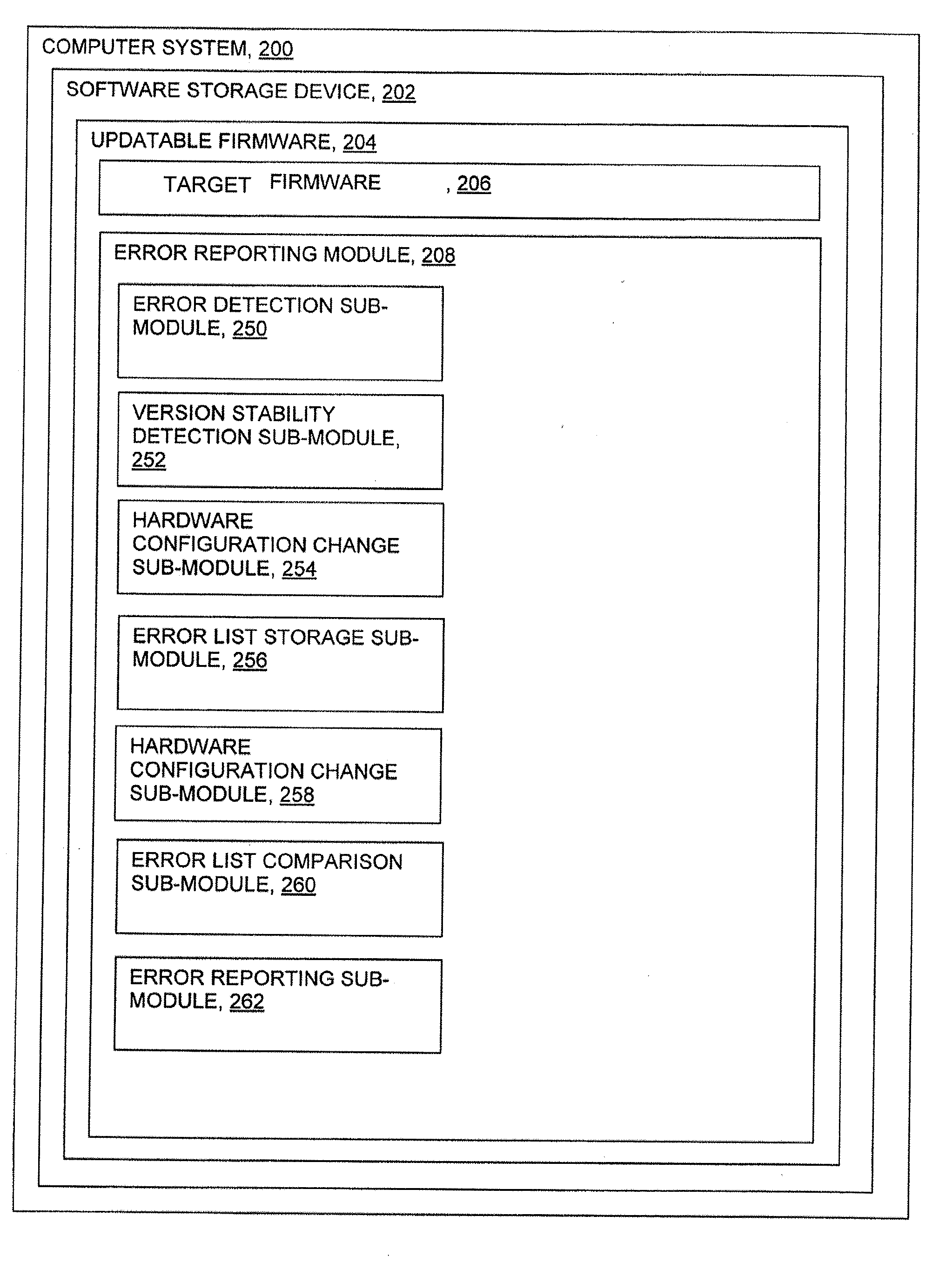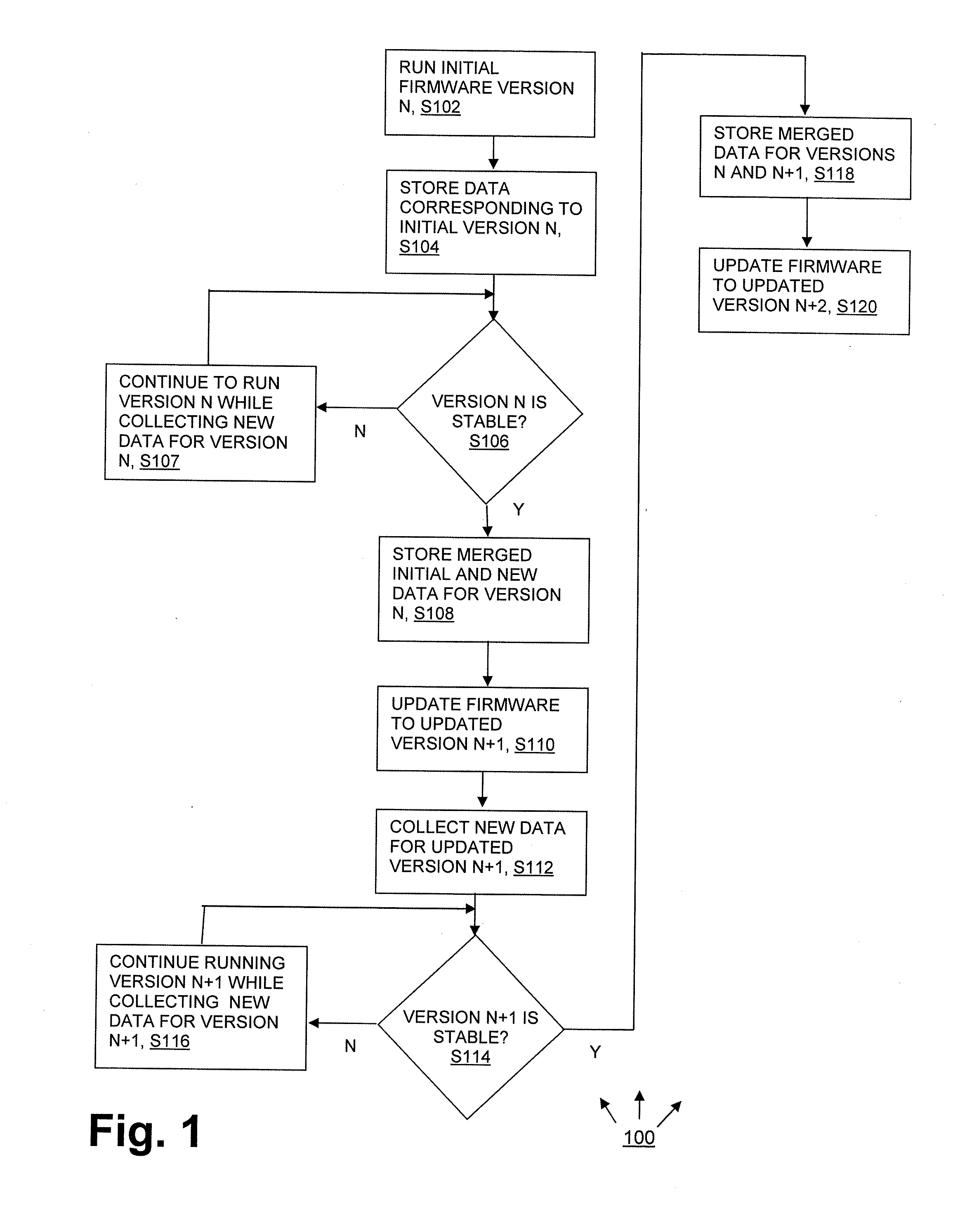Method To Detect Firmware / Software Errors For Hardware Monitoring
a hardware monitoring and firmware technology, applied in error detection/correction, instruments, computing, etc., can solve problems such as increased repair and replacement costs, labor, repair time and warranty-related costs, and loss of customer confiden
- Summary
- Abstract
- Description
- Claims
- Application Information
AI Technical Summary
Benefits of technology
Problems solved by technology
Method used
Image
Examples
Embodiment Construction
[0022]FIG. 1 shows a method 100 according to the present invention in flowchart form. The method embodiment 100 applies to a firmware update. To explain the method in general terms, initial data for firmware version N is used for a period until the version N firmware is deemed stable, collecting and updating error data all the while. (See steps S102, S104, S107 and S106.) When version N is running stably, then a full data set for firmware version N is created, stored and marked “active” based on known firmware issues associated with a known set of hardware at step S108. As system firmware updates to version N+1 (see step S110), the data set N (the first list) is transitioned to data set N+1 (the second list) after a trial period. The trial period may be based on time and / or on discrete events that occur in the computer system. For example, the trial period may be determined by the original hardware monitoring software and the new monitor per error. In this example, the trial period ...
PUM
 Login to View More
Login to View More Abstract
Description
Claims
Application Information
 Login to View More
Login to View More - R&D
- Intellectual Property
- Life Sciences
- Materials
- Tech Scout
- Unparalleled Data Quality
- Higher Quality Content
- 60% Fewer Hallucinations
Browse by: Latest US Patents, China's latest patents, Technical Efficacy Thesaurus, Application Domain, Technology Topic, Popular Technical Reports.
© 2025 PatSnap. All rights reserved.Legal|Privacy policy|Modern Slavery Act Transparency Statement|Sitemap|About US| Contact US: help@patsnap.com



